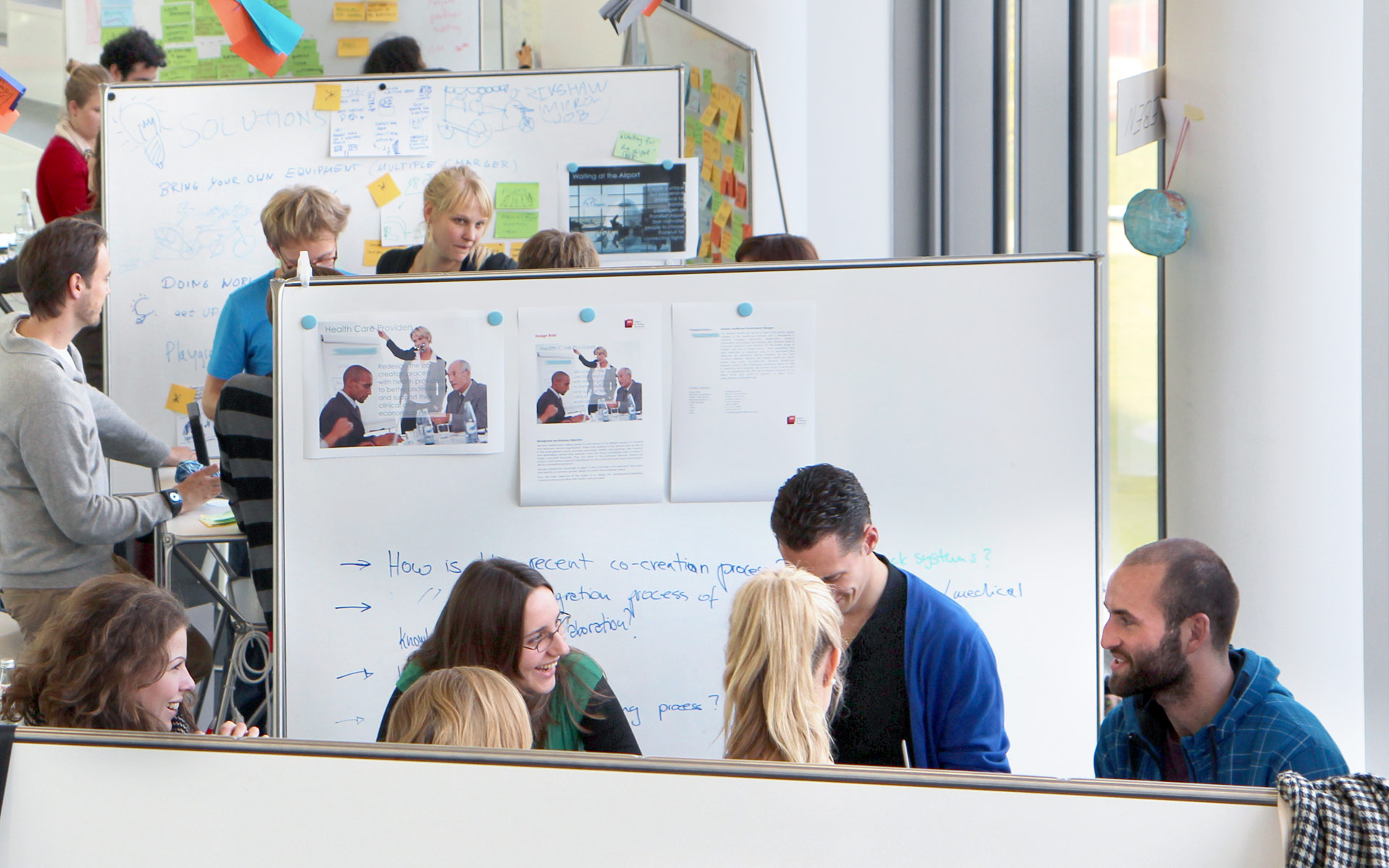PI: Prof. Dr. Christoph Meinel
Abstract
Our 2009 experiment on Design Thinking performance yielded a surprising result: When confronted with a demanding design challenge, not only D-School trained teams, but untrained teams as well came up with solutions highly prized by the expert community. Of course, it was expected that D-School trained teams would perform well – but how come the untrained teams did such a great job too?
Two factors come to mind that were actually equal in both experimental conditions: All teams received the same (demanding, yet welcoming) instruction. Furthermore, all teams worked at the D-School. Maybe the factors “D-School space” and “design-challenge- instruction” already suffice to elicit a Design Thinking like work process that tends to end in most compelling results. This thought has been the starting point of two hook-up studies in 2010.
To test the hypotheses regarding space and instructions rigorously, in study I an academic community is being observed known for its reliable failures in interdisciplinary projects: Far from presenting common solutions (even bad ones), this community regularly fails to develop a common problem perception. An unbridgeable gap seems to separate the members of different disciplines. Here, Design Thinking might well be of help as it fosters a common, intuitive problem perception. Thus, study I examines how this particularly troubled academic community fares – if only people work at the D-School, under a design-challenge-type-instruction. In study II, scheduled for the first weekend in June, a classical experimental setup and fifty participants will allow additional, numerical estimates for the impact of “space” and “instruction”.

